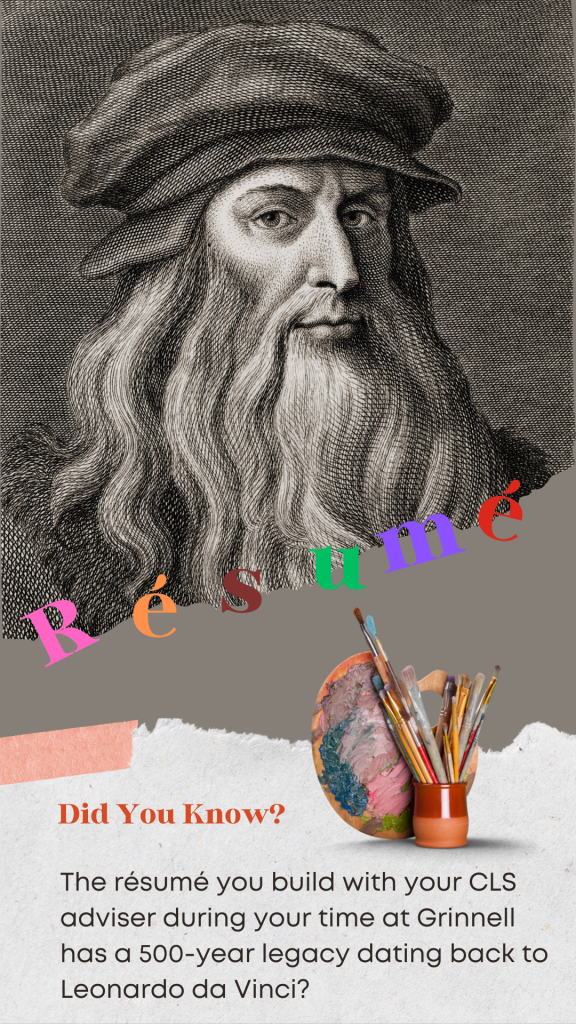When he wasn’t painting masterworks like the Mona Lisa, conducting experiments in flight, or designing buildings, Leonardo da Vinci was busy job hunting and, in so doing, is widely credited with inventing the résumé. At the age of 30, da Vinci laid out his case seeking to gain the patronage of Ludovico Sforza, who would become Duke of Milan. In writing his letter, da Vinci considered the needs of the man who would become his longtime patron and selected the capabilities he knew would be a good match for those needs.[i]
Alongside the handwritten missive, which consisted largely of numbered points focusing on all the ways he had strengthened military defenses against enemies, da Vinci included a silver lyre that he sculpted in the shape of a horse’s head.
In the 500 years since da Vinci stated his case, the résumé has evolved from handwritten letters of introduction (first called a résumé from the French résumer, to summarize, around 1500[ii]) to informal documents scribbled by hand to more formalized documents (in the 1940s) that included information like the weight, age, height, marital status, and religion of the applicant.[iii]
The technology of the 1970s and 1980s—with typesetting and word processing becoming more common—resulted in résumés that were more professional and more sales oriented.[iv] After carefully crafting your résumé, you’d take it to a print shop and have it reproduced on heavyweight stationery, typing your cover letter and addressing a business-sized #10 envelope with care on matching paper stock.
In the late 1980s, you might have faxed that same cover letter and résumé to a potential employer, and the employer would have been able to conduct a basic online background check. But it wouldn’t be until the mid-1990s that you could submit a résumé via email. Changes kept proliferating as the Internet and the World Wide Web went public in 1994. While LinkedIn wasn’t founded until 2003, some other job sites, like Monster.com, started as early as 1994. [v]
The conventions of the résumé continue to evolve—a one page maximum for entry-level résumés, a tailored résumé targeted to each job post, key word résumés that will make it through applicant tracking software (ATS)—yet, the purpose is still the same: write a document that makes the person reading your résumé want to have a conversation with you about how you’re a good fit for their needs.

[i] https://gizmodo.com/leonardo-da-vincis-hand-written-resume-will-make-you-fe-1684441362
[ii] https://www.businessinsider.com/how-resumes-have-evolved-since-their-first-creation-in-1482-2011-2
[iii] https://www.businessinsider.com/how-resumes-have-evolved-since-their-first-creation-in-1482-2011-2
[iv] https://www.businessinsider.com/how-resumes-have-evolved-since-their-first-creation-in-1482-2011-2
[v] https://www.businessinsider.com/how-resumes-have-evolved-since-their-first-creation-in-1482-2011-2
